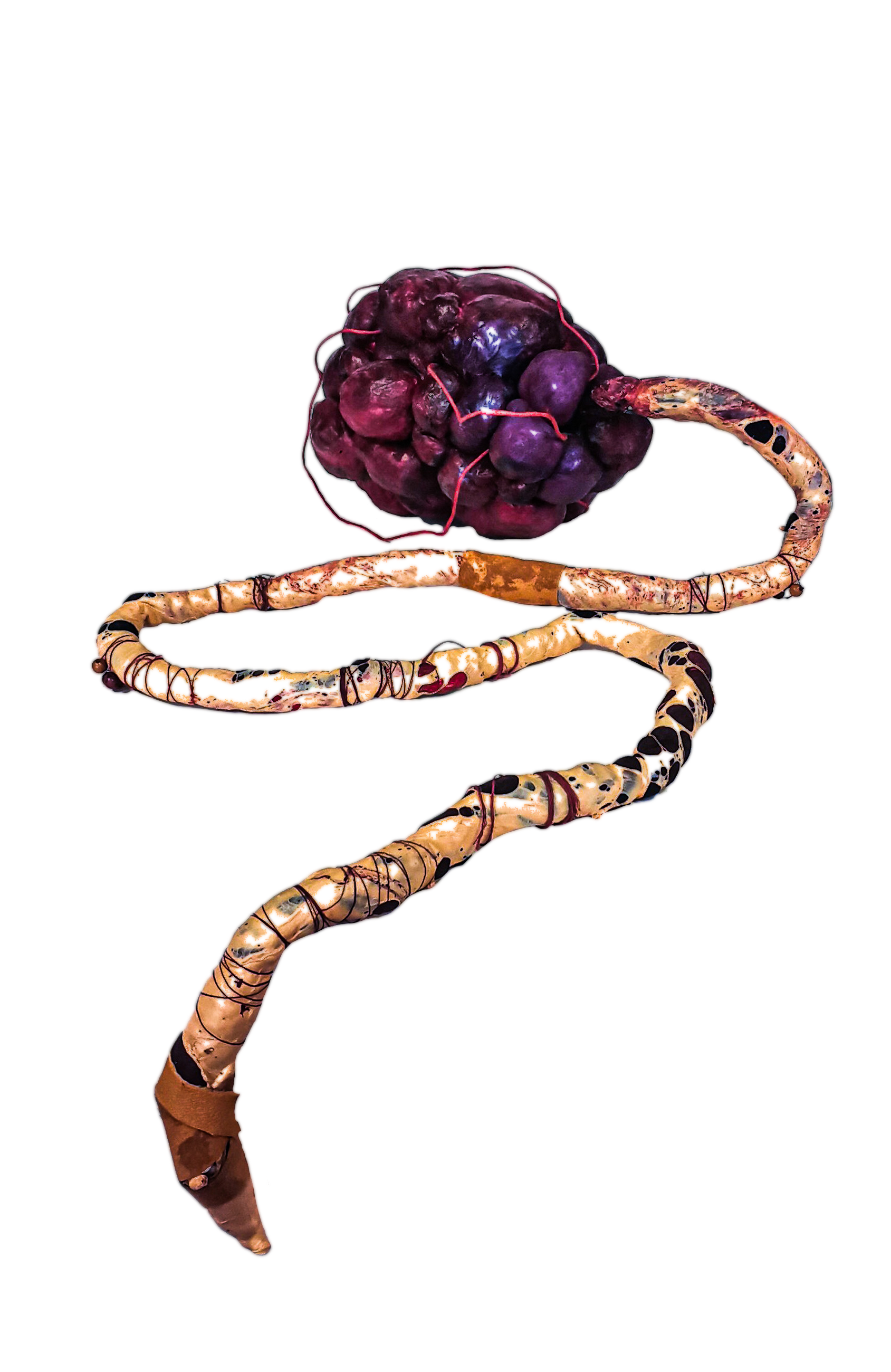
Just like a garden, the mind also has to be weeded from obsessive thoughts that sprout from idea into organic form. I tear and cut old clothes in the process of liberating the material from its associated history. The constant reuse and upcycling of the same fabrics through various stages and purposes slowly sands off any memory, rendering the textiles a mere sum of their physical properties. I fill these materials with a projecting of my body-related mindscape, where thoughts of obsessive self-doubt and crippling nihilism grow. I breathe my fears of pregnancy into a gurgling bloody organ that helplessly hangs on a damaged umbilical cord. I construct a womb with a feathered entrance, so I have the space and time to (un)pack my worries. I hang abject leather balls to evoke the vulnerability of laying in a crib, right under the weight of all the psychological and physical horrors to come. I weed these worries by the roots from my inner landscape so there is fresh mental soil available for new, kinder toughs to bloom. I leave these overgrown thoughts to hang and dry as spices and toxic roots in a witch’s kitchen. The static materiality of these visceral objects activates in the digital realm. Half-hidden under a roof, The Well screens the relationship dynamics performed with body and matter. The video exhibits fragments of shared intimacy among women, only for the eyes of a camera, putting a glass screen barrier between observer and initiated. The secret spells and the rituals of healing remain hidden, like the narrative of a dream that we only remember fragmented elements of.

Rebeka Csombordi is a multimedia artist from Hungary, specializing in interactive soft sculptures made from upcycled textiles. Her practice is centered around social ecology, and observes the relationship dynamics between internal and external landscapes on an intimate, personal level. The work is characterized by meticulous processes that require intense discipline to endure repetitive actions and exercise attention to detail. For this, stitching by hand plays a significant role in the creative process as a ritual of active meditation. While Rebeka’s practice for a long time remained two dimensional – in static watercolor paintings – inspired by sustainability concerns she recently started to exhibit a new fascination for upcycling fabric clothing and household waste. The resulting, often interactive, soft sculptures are a means of self-reflection in the context of ecologically aware social practices, attempts to stitch together the relationship between internal and external landscapes into harmonic coexistence.